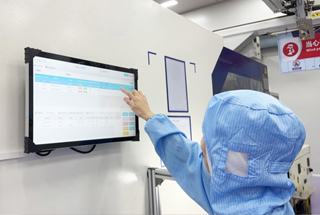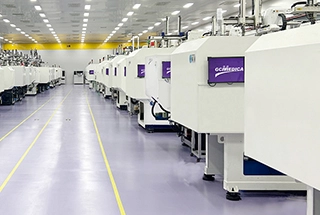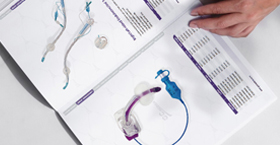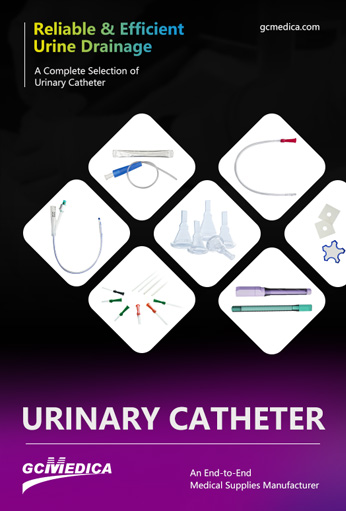Intermittent catheterization is a common technique for bladder emptying in patients who cannot void naturally due to neurological conditions, urethral strictures, or other causes. Over the years, a variety of catheter designs have been developed to improve ease of use, reduce infection risk, and enhance patient comfort. Below is an overview of the main types of intermittent catheters, their key characteristics, advantages and disadvantages, and typical clinical indications.
| Catheter Type | Key Features | Advantages | Disadvantages | Typical Indications |
|---|---|---|---|---|
| Uncoated (Standard) | • Smooth PVC or silicone surface• Requires manual lubrication before insertion | • Widely available and inexpensive• Familiar to many clinicians | • Increased friction if lubrication is inadequate• Higher risk of urethral trauma and discomfort | • Short-term catheterization• Hospital settings with strict sterile technique |
| Hydrophilic | • Surface treated with a polymer that binds water• Activates when dipped in sterile water | • Extremely slippery—minimal friction• No separate gel needed | • Generally single-use; higher per-unit cost | • Self-catheterization at home• Patients with sensitive urethras |
| Pre‑lubricated | • Catheter pre-coated with water‑soluble gel• Ready to use straight from the package | • Convenient—no separate lubricant• Lower infection risk if sterile packaging intact | • Lubricant layer can be uneven• More expensive than uncoated | • Patients with limited dexterity• Outpatient or home use |
| Closed System | • Catheter pre‑connected to a sterile drainage bag• All‑in‑one sterile kit | • Minimizes contamination—ideal for hospitalized or immunocompromised patients• Reduces handling steps | • Bulkier; less discreet for home use• Higher cost per kit | • Acute care settings• Patients at high risk of urinary tract infection (UTI) |
| Coated (e.g., PTFE) | • Surface coated with low‑friction material (e.g., polytetrafluoroethylene) | • Reduced friction compared to uncoated• Long shelf‑life | • Slightly stiffer; may feel less “natural” to some users | • Patients transitioning from uncoated to hydrophilic catheters |
| Coudé‑tip (Curved) | • Slightly curved, tapered tip | • Facilitates navigation past enlarged prostate or strictures | • More challenging to orient properly• Not necessary for straight urethral anatomy | • Male patients with prostate enlargement or urethral strictures |
| Single‑use vs. Re‑use | • Single‑use: sterile, discarded after one insertion• Re‑use: cleaned and stored for multiple uses (only for certain silicone catheters) | • Single‑use: virtually zero cross‑contamination risk• Re‑use: cost‑saving for long‑term self‑catheter users | • Re‑use: potential for microbial colonization if cleaning is inadequate• Regulatory restrictions | • Single‑use: standard in most regions• Re‑use: in settings with limited resources |
Brief Description of Each Type
Uncoated (Standard) Catheters
These are the traditional PVC or silicone catheters that require the user to apply sterile lubricant before insertion. They are cost‑effective and widely stocked in hospitals, but carry a higher risk of urethral irritation if lubrication is not managed correctly.Hydrophilic Catheters
Engineered with a special polymer coating that becomes extremely slippery when activated by water, hydrophilic catheters minimize urethral friction, making insertion and removal more comfortable. They are popular for home self‑catheterization, particularly among patients who require frequent catheterization.Pre‑lubricated Catheters
These catheters come pre‑coated with water‑soluble lubricant inside the packaging. The user simply opens the sterile package and begins catheterization, which simplifies the procedure for those with limited hand dexterity or visual impairment.Closed System Catheters
Often used in acute care settings, these all‑in‑one kits include a catheter pre‑attached to a sterile drainage bag. By minimizing catheter handling and connection steps, closed systems reduce the risk of introducing pathogens into the urinary tract.Coated (e.g., PTFE) Catheters
A compromise between uncoated and hydrophilic designs, PTFE‑coated catheters offer reduced friction without requiring activation in water. They tend to have a longer shelf life and can be more economical when compared to hydrophilic models.Coudé‑Tip Catheters
Featuring a gently curved tip, coudé catheters are designed to navigate past obstructions such as an enlarged prostate or urethral strictures. Proper orientation of the curve is essential to ensure smooth passage.Single‑use vs. Re‑use
While single‑use catheters are the standard in many countries to virtually eliminate cross‑contamination, certain high‑quality silicone catheters may be approved for limited re‑use. Re‑use protocols require meticulous cleaning and storage procedures.
The choice of an intermittent catheter should be individualized based on patient anatomy, clinical setting, frequency of catheterization, and risk factors for urethral trauma or infection. Uncoated catheters remain a cost‑effective choice for short‑term or inpatient use, whereas hydrophilic and pre‑lubricated models improve comfort and ease of use for chronic self‑catheterizers. Closed systems are ideal for patients at high risk of infection, and specialized designs such as coudé‑tip catheters facilitate catheterization in anatomically challenging cases. Understanding the features, benefits, and limitations of each type empowers clinicians and patients to select the most appropriate device, thereby optimizing bladder management and enhancing quality of life.
| Urinary Catheter > |


 Français
Français Español
Español Products
Products

 About Us
About Us












